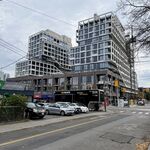taal
Senior Member
If, hypothetically, Finch bus service was reduced to 1 bus per hour, you can be assured that people will start using whatever other mode they can (drive, bike, walk, crawl, electric wheelchair), and the buses won't actually be full.

Where do you think is the ideal spot on this curve for TTC service?
This is pretty silly ...
Ideally any transit agency would want to be in the middle but there are problems with doing such ... if say for the TTC the ideal number is 5min off peak for Finch that leads to bunching as that's not *manageable*. So really need to look at a lot of other factors.
The other clear issue is how does one forcast such a curve in advance ... they don't typically, they just use whatever current ridership exists and probably try to aim smack middle in your chart there. But what's to say going over to the left side doesn't increase demand and then the entire curve shifts..




